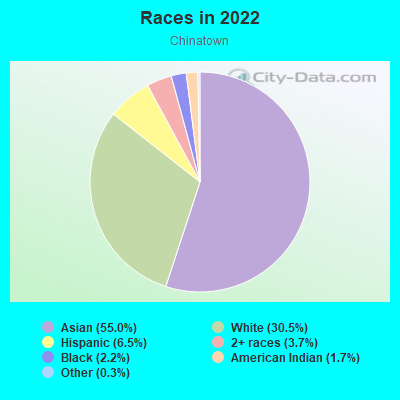Chinatown is never stagnant, and always changing, much like the rest of New York City. As different ethnic groups come and go, they leave a part of themselves behind. Just like how the Italians left their Italian culture in the form of food, the Chinese have left their culture as well. After the Exclusion Act was lifted in 1943 and a quota was given to China, the immigrant population in Chinatown began to increase. After the quita was abolished in 1968, the immigrant population shot up. As a result, Chinatown expanded and even today, Chinatown is still expanding.

In today’s Chinatown, majority of the population is still Asian. However, there are still other races evident living in Chinatown. As seen in the picture, majority is still Asians who live alone compared to the other races. The percentage of single-mother households among all households in Chinatown is 3.0%, whereas New York is 12.5%. There is a rather large difference of around 9.5%, which is interesting. The percentage of people who speak English not well or not at all is 51.2% in Chinatown, and 12.2% in New York. That is not as surprising, since Chinatown is a place where immigrants gather. Most of the people who live in Chinatown work in Chinatown, since Chinatown is home to so many restaurants and businesses. Most of the residents walk as their mode of transportation. In respect with education, the percentage of students in K-12 schools is 14.5% in Chinatown and 19.4% in New York. The percentage of students enrolled in private schools is 6.7% in Chinatown and 18.8% in New York. The percentage of the population below the poverty line in Chinatown is 31.2% and 21.2% in New York.
http://www.city-data.com/neighborhood/Chinatown-New-York-NY.html

